- 17/5/14
- 1,237
- 297
- 83
Hi folks,
today I had some time to work on one of my watches and thought it might be interesting for one or another to see how a waterproofing works with a PAM.
It is not a real big challenge when you got the right tools but as I did this not that often so far it´s still a bit thrilling for me at least
Ok, lets start...
today I am working on my PAM 029 B Series – I think it was made by DSN but I am not really sure. It was sold to me with a Swiss ETA and it just was stated as an ETA in the sales thread – because it ran very good and when winding it, it felt quite good I never thought about opening it - so this time it´s kind of a double thrill
here it is...
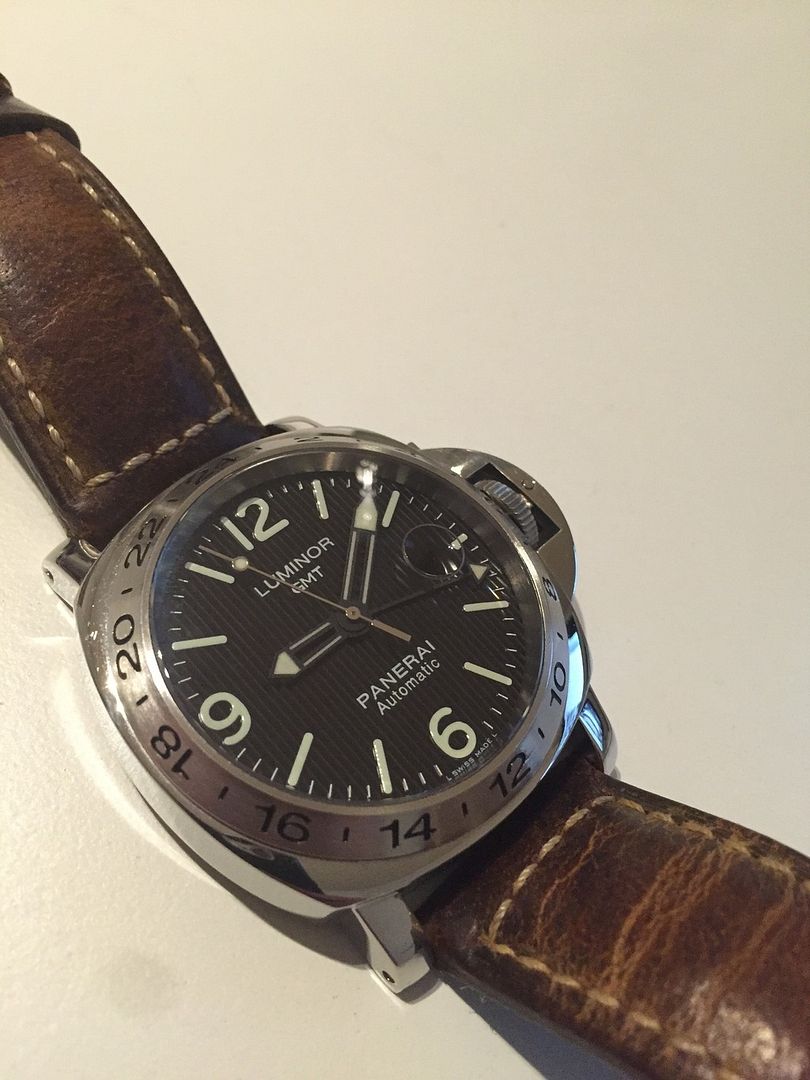
I disassembled the strap, and the caseback...no big deal...
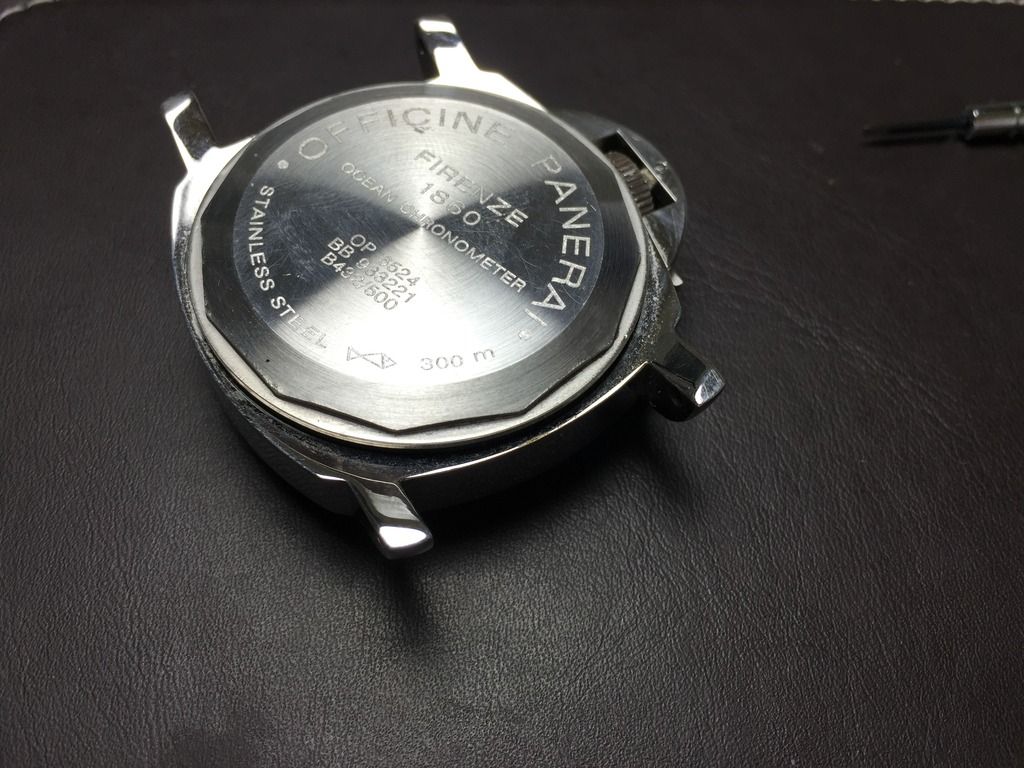
so let´s have a look at the movement...
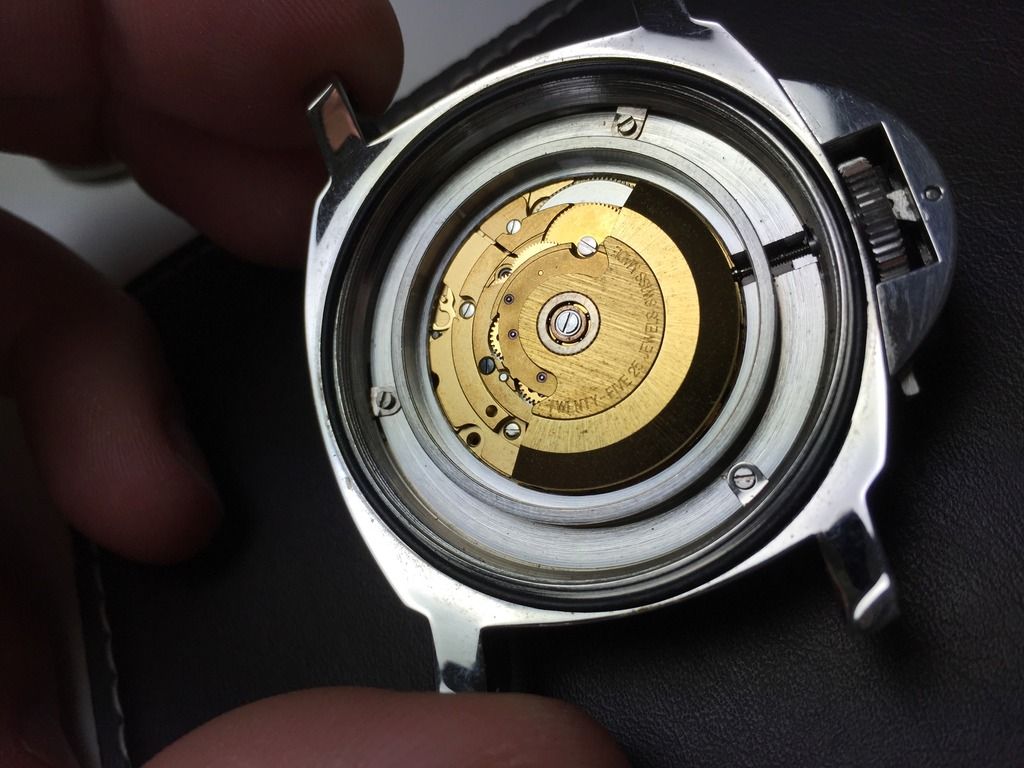

Nice one...swiss made ETA 2836-2 everything looks clean and fine...so I had to remove the crown guard and the stem next...a bit different than on the 2864 where I had to loose a screw, here it is a pin that has to be pushed (do it with the stem pulled out in the time setting mode)
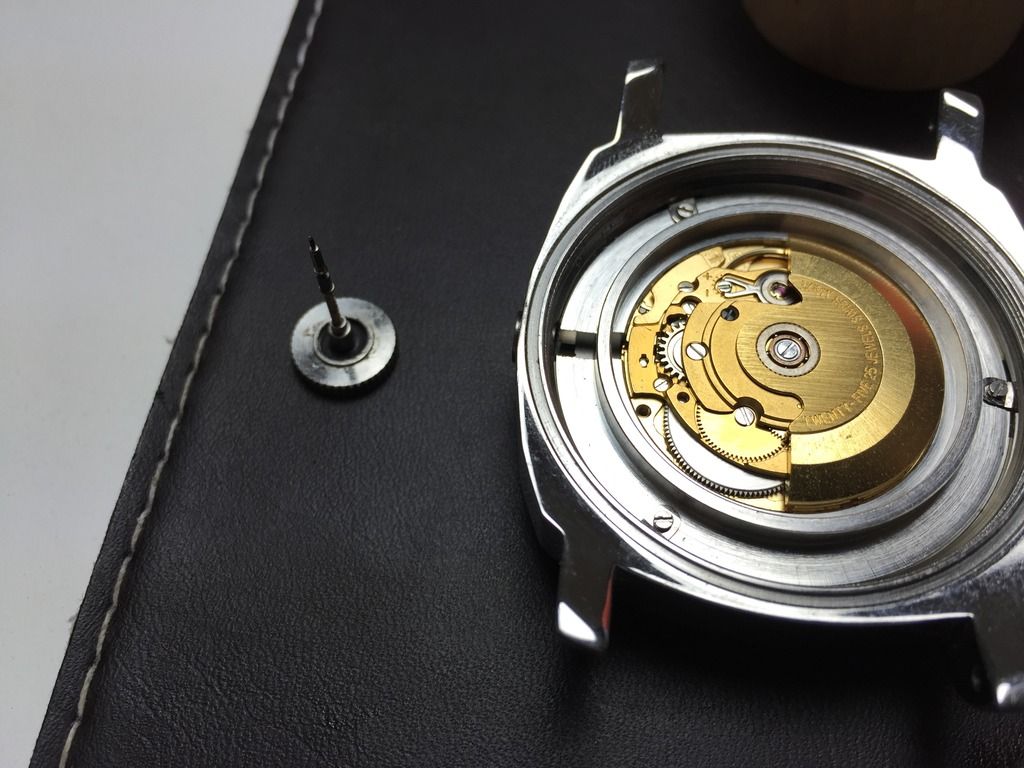
After that the O Ring got a silicon bath...
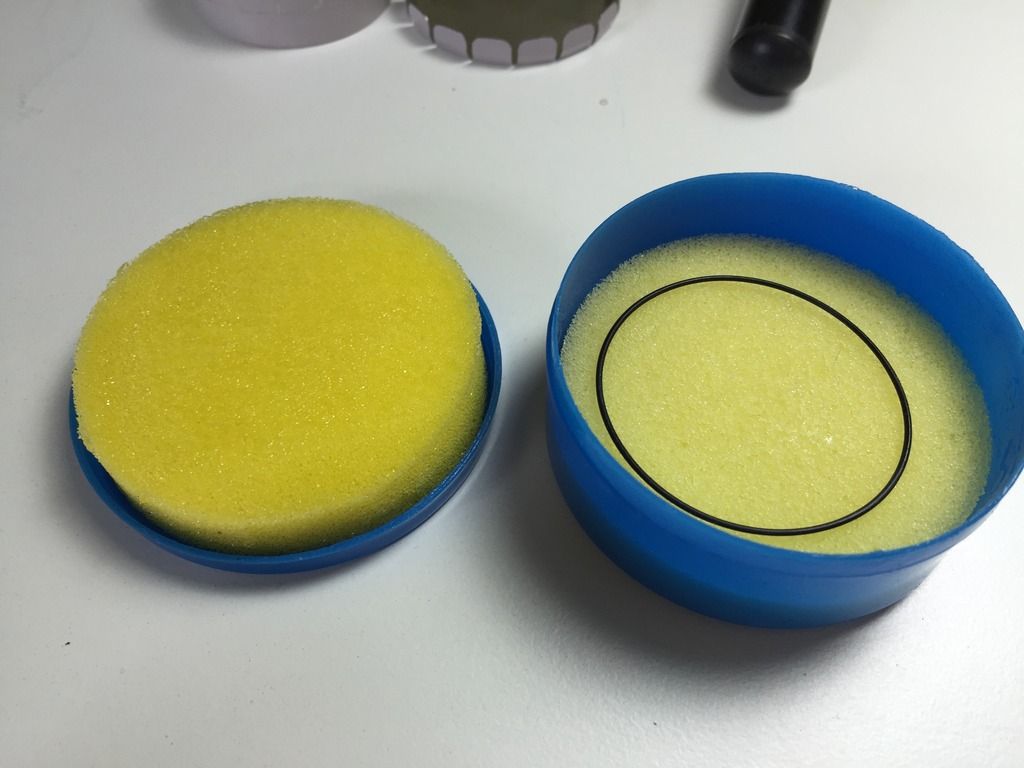
I removed the screws of the movementholder and took the movement with dial out of the case, put it aside and tried to avoid touching it
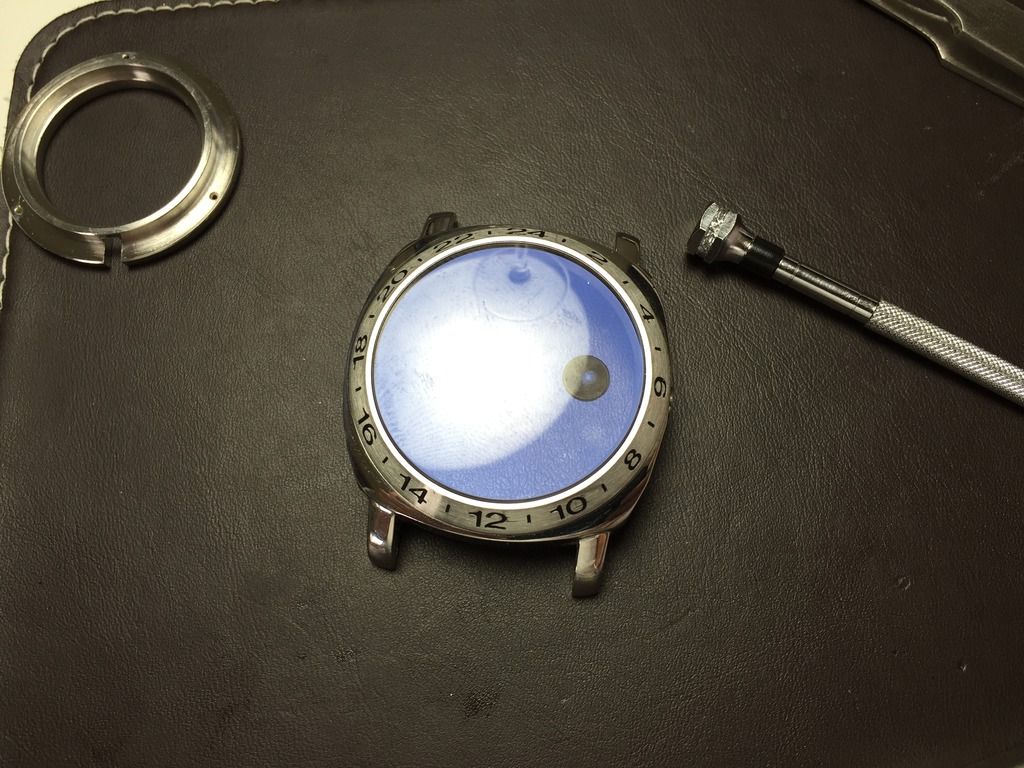
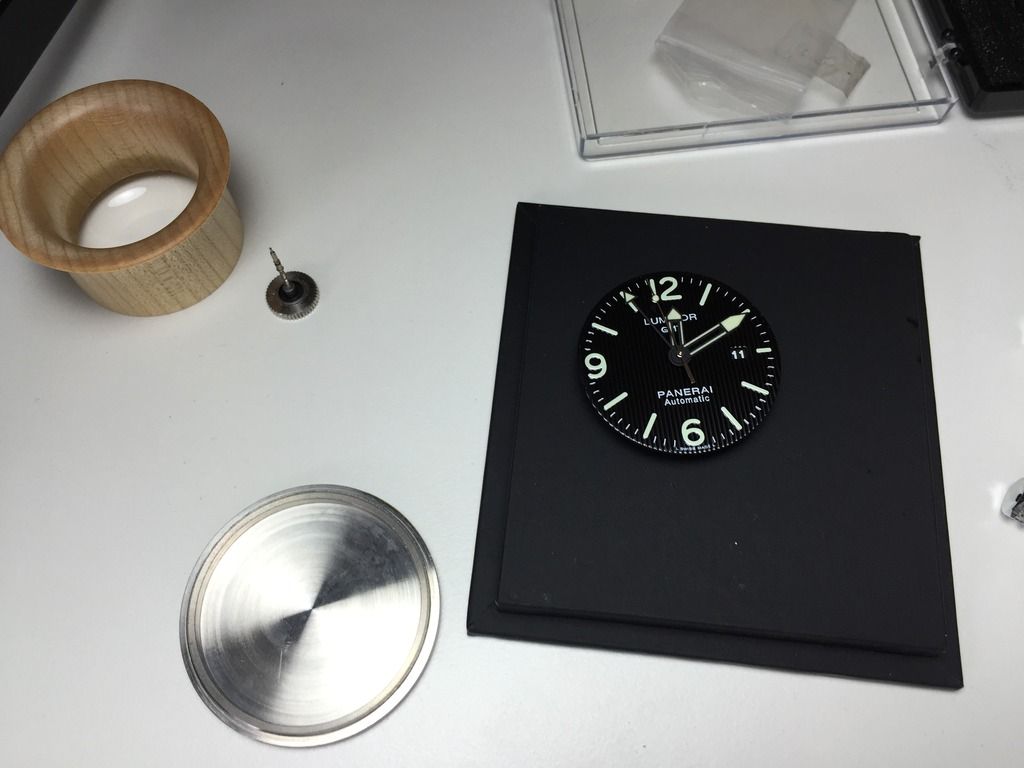
After that I took the O Ring out of its´bath and put it back to the case, and put the caseback back on the watch, greased the o rings on the stem and the case.

reassembled the crownguard and filled up the pressure tester with water.
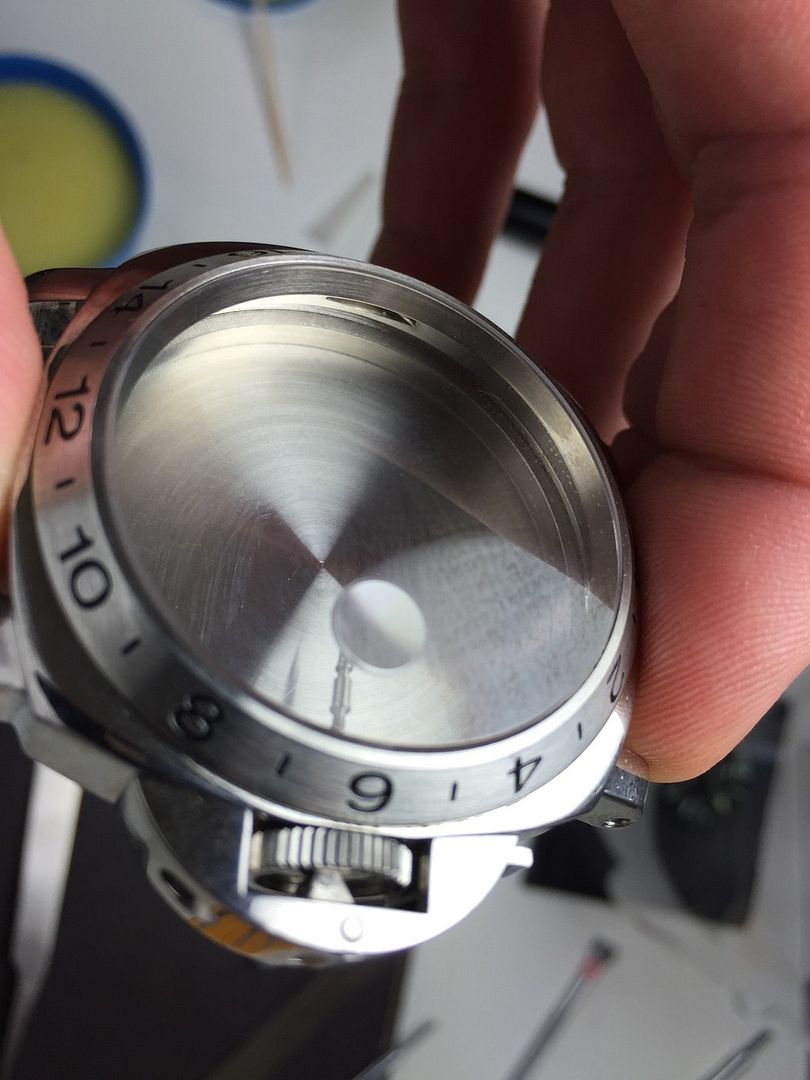
After that I hung the case on the hook, closed the container and pulled the lever of the pressure tester until I reached 3bar
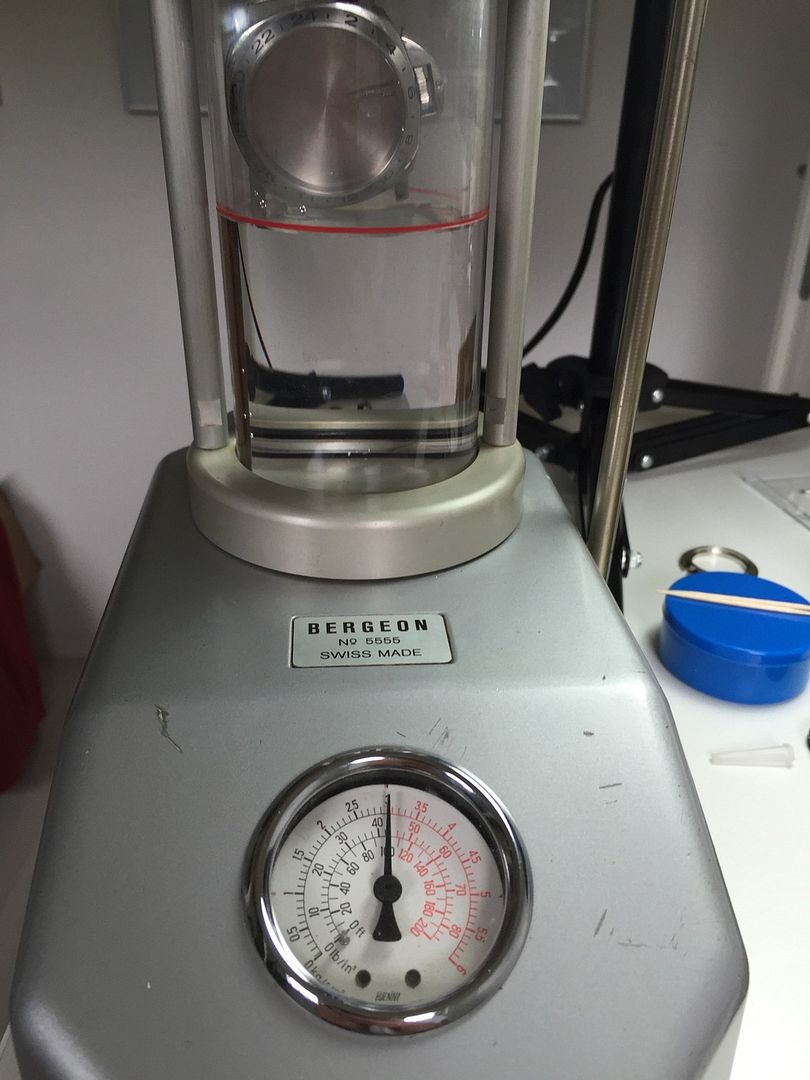
Time for an espresso as I had to wait for about three minutes before I can let the watch go diving...
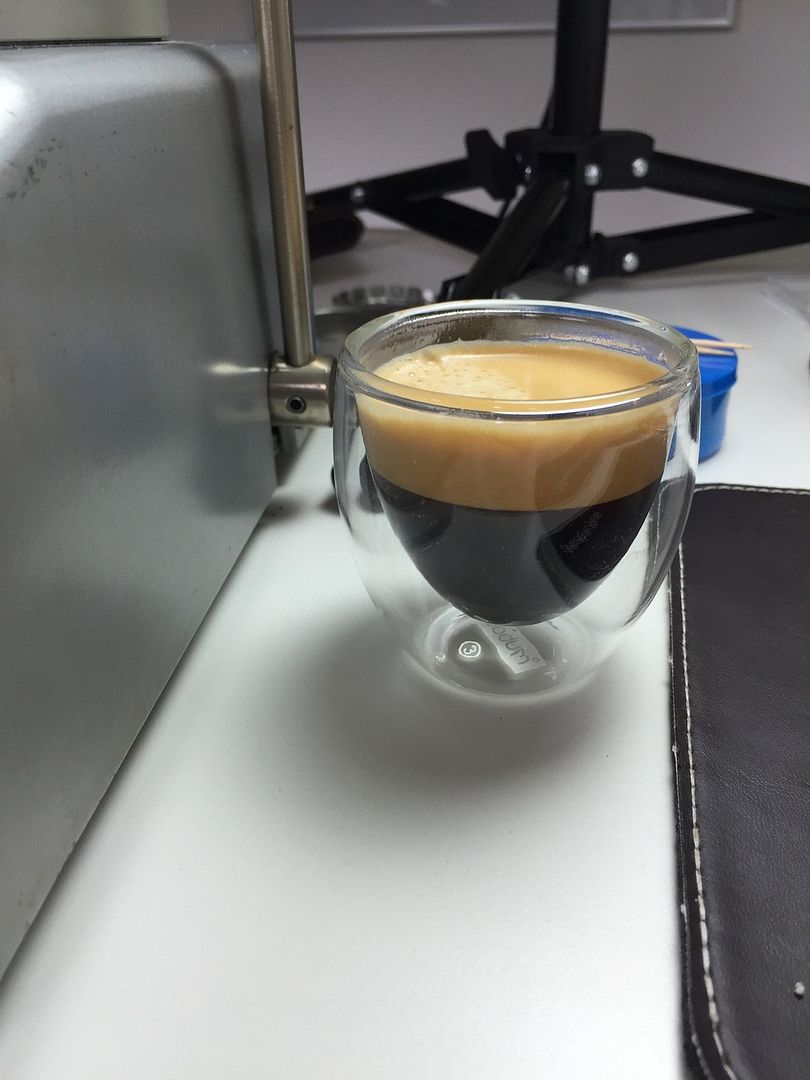
After the espresso I let the watch go for a dive and released the pressure in the container immediately
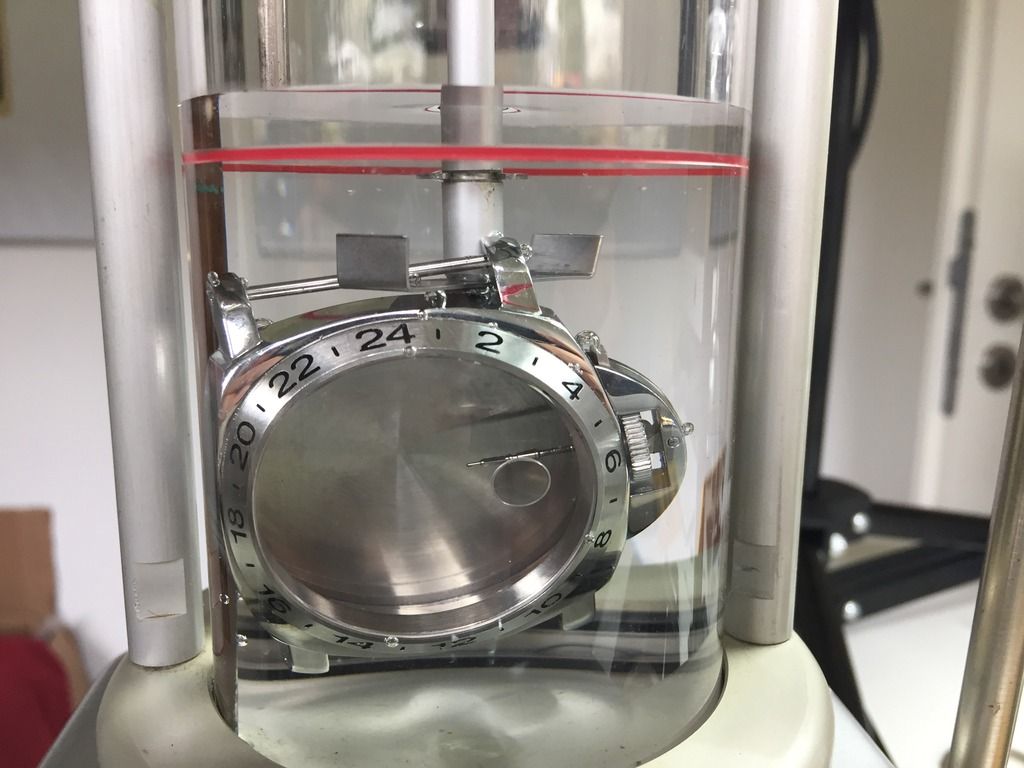
If you can see bubbles rise out of the case you should remove the case asap out of the water....if you don´t see anything...drink another espresso...everything is ok.

I pulled the case out of the water, disassebled everything again and put everything back where it belongs...movement, movement holder, stem, o rings, caseback, crown guard and did the thing with hooking up the watch, pulling the lever up to 3bar, having another espresso and letting it go for a dive again....
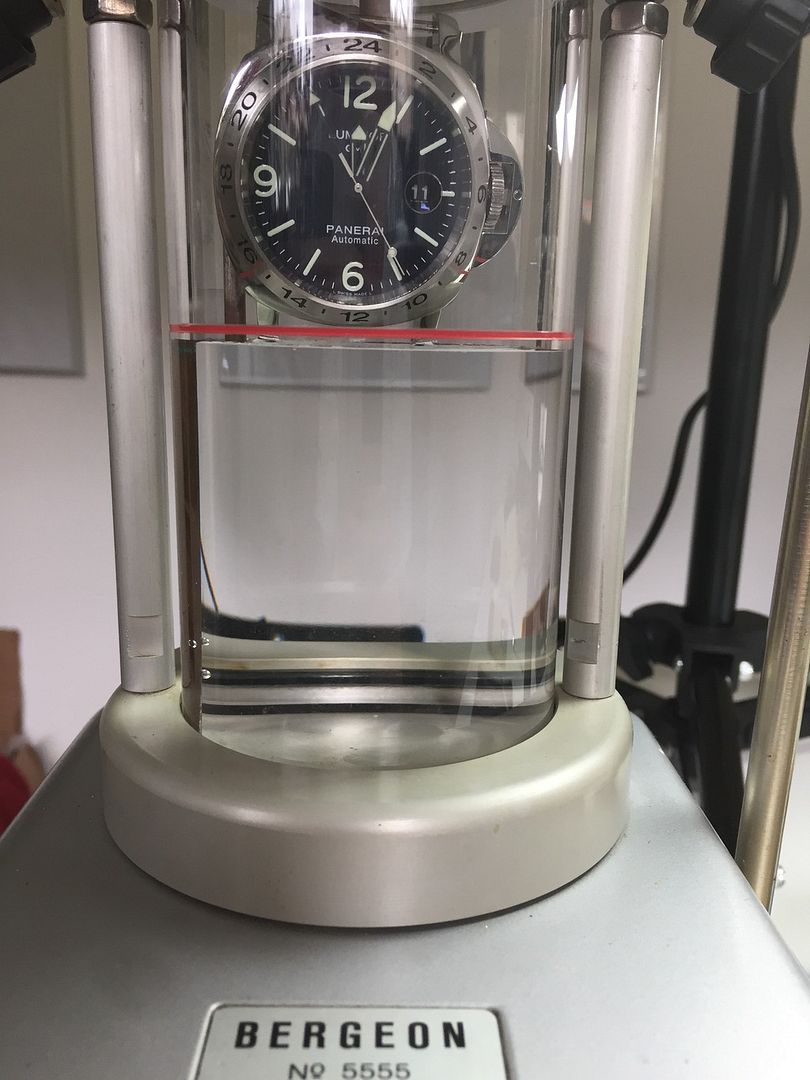
This is quite thrilling again...it might not be funny to see water go in your watch anyway but if there´s an ETA movement inside it would be really annoying.
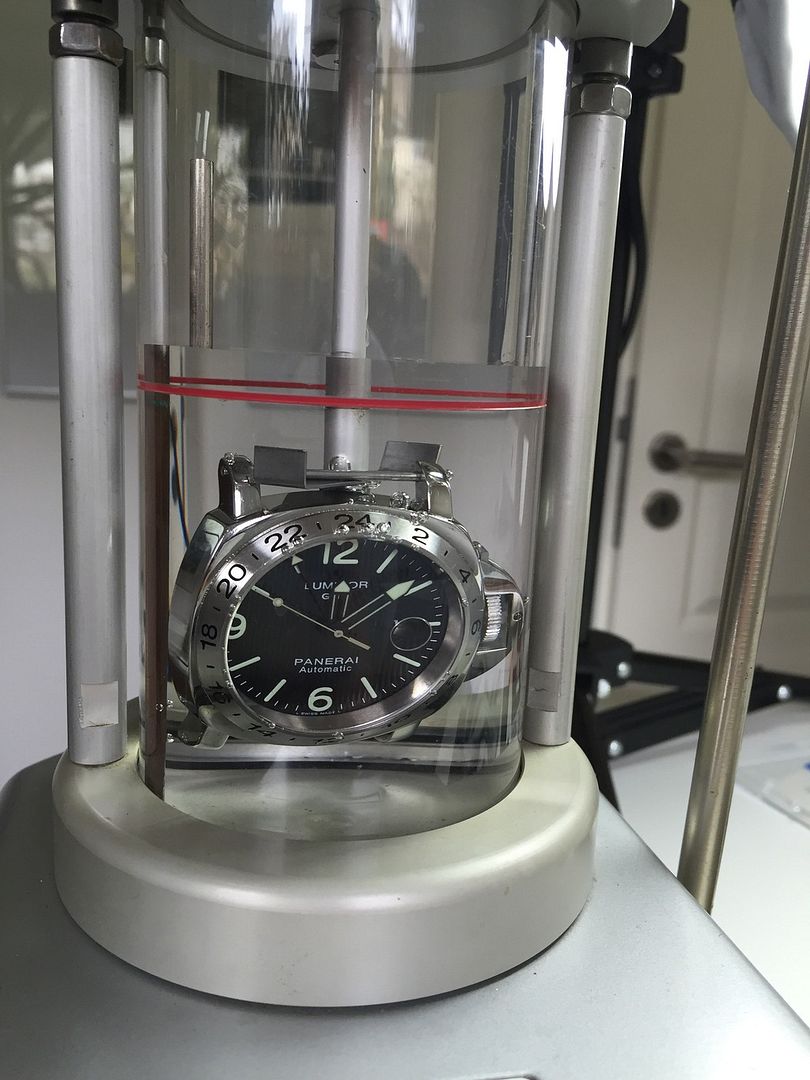
the bubbles you see here are no problem...
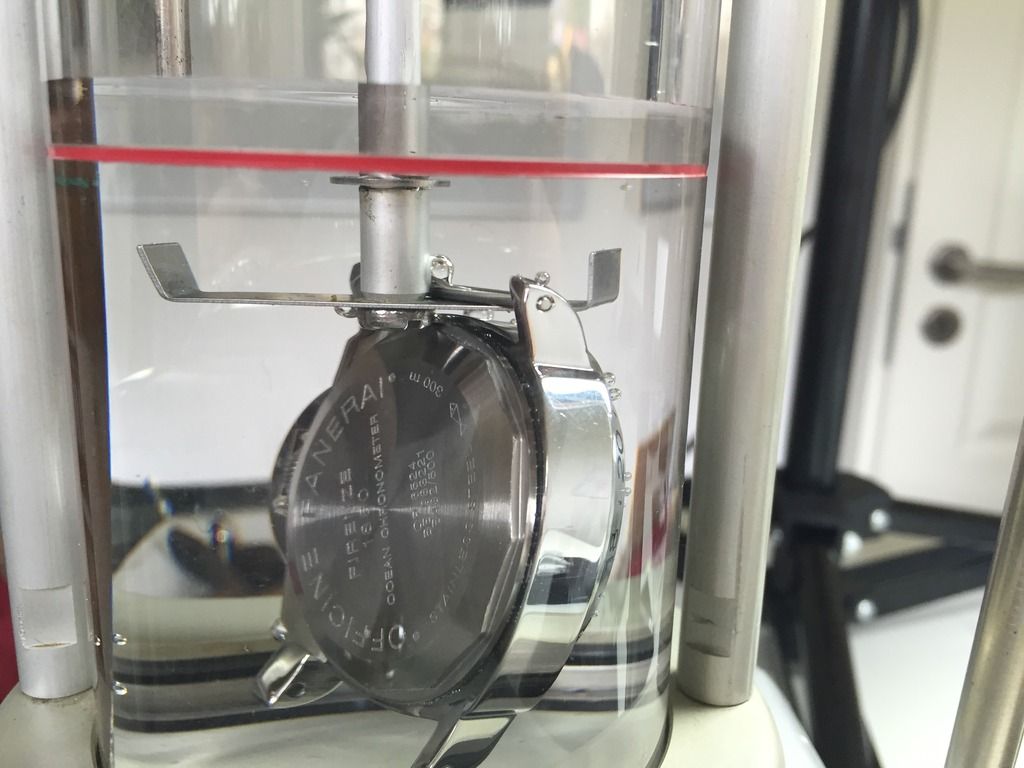
It seems like everything worked out well as you can see...no bubbles and moreover...no water inside the watch.

So as my result after all that - I don´t have to make up my mind of ruining my watches when I do the dishes for my wife, as she is more handsome when another package in a size everyone of us knows, arrives
Thanks for your interest !
today I had some time to work on one of my watches and thought it might be interesting for one or another to see how a waterproofing works with a PAM.
It is not a real big challenge when you got the right tools but as I did this not that often so far it´s still a bit thrilling for me at least
Ok, lets start...
today I am working on my PAM 029 B Series – I think it was made by DSN but I am not really sure. It was sold to me with a Swiss ETA and it just was stated as an ETA in the sales thread – because it ran very good and when winding it, it felt quite good I never thought about opening it - so this time it´s kind of a double thrill
here it is...

I disassembled the strap, and the caseback...no big deal...

so let´s have a look at the movement...


Nice one...swiss made ETA 2836-2 everything looks clean and fine...so I had to remove the crown guard and the stem next...a bit different than on the 2864 where I had to loose a screw, here it is a pin that has to be pushed (do it with the stem pulled out in the time setting mode)

After that the O Ring got a silicon bath...

I removed the screws of the movementholder and took the movement with dial out of the case, put it aside and tried to avoid touching it


After that I took the O Ring out of its´bath and put it back to the case, and put the caseback back on the watch, greased the o rings on the stem and the case.

reassembled the crownguard and filled up the pressure tester with water.

After that I hung the case on the hook, closed the container and pulled the lever of the pressure tester until I reached 3bar

Time for an espresso as I had to wait for about three minutes before I can let the watch go diving...

After the espresso I let the watch go for a dive and released the pressure in the container immediately

If you can see bubbles rise out of the case you should remove the case asap out of the water....if you don´t see anything...drink another espresso...everything is ok.

I pulled the case out of the water, disassebled everything again and put everything back where it belongs...movement, movement holder, stem, o rings, caseback, crown guard and did the thing with hooking up the watch, pulling the lever up to 3bar, having another espresso and letting it go for a dive again....

This is quite thrilling again...it might not be funny to see water go in your watch anyway but if there´s an ETA movement inside it would be really annoying.

the bubbles you see here are no problem...

It seems like everything worked out well as you can see...no bubbles and moreover...no water inside the watch.

So as my result after all that - I don´t have to make up my mind of ruining my watches when I do the dishes for my wife, as she is more handsome when another package in a size everyone of us knows, arrives
Thanks for your interest !

